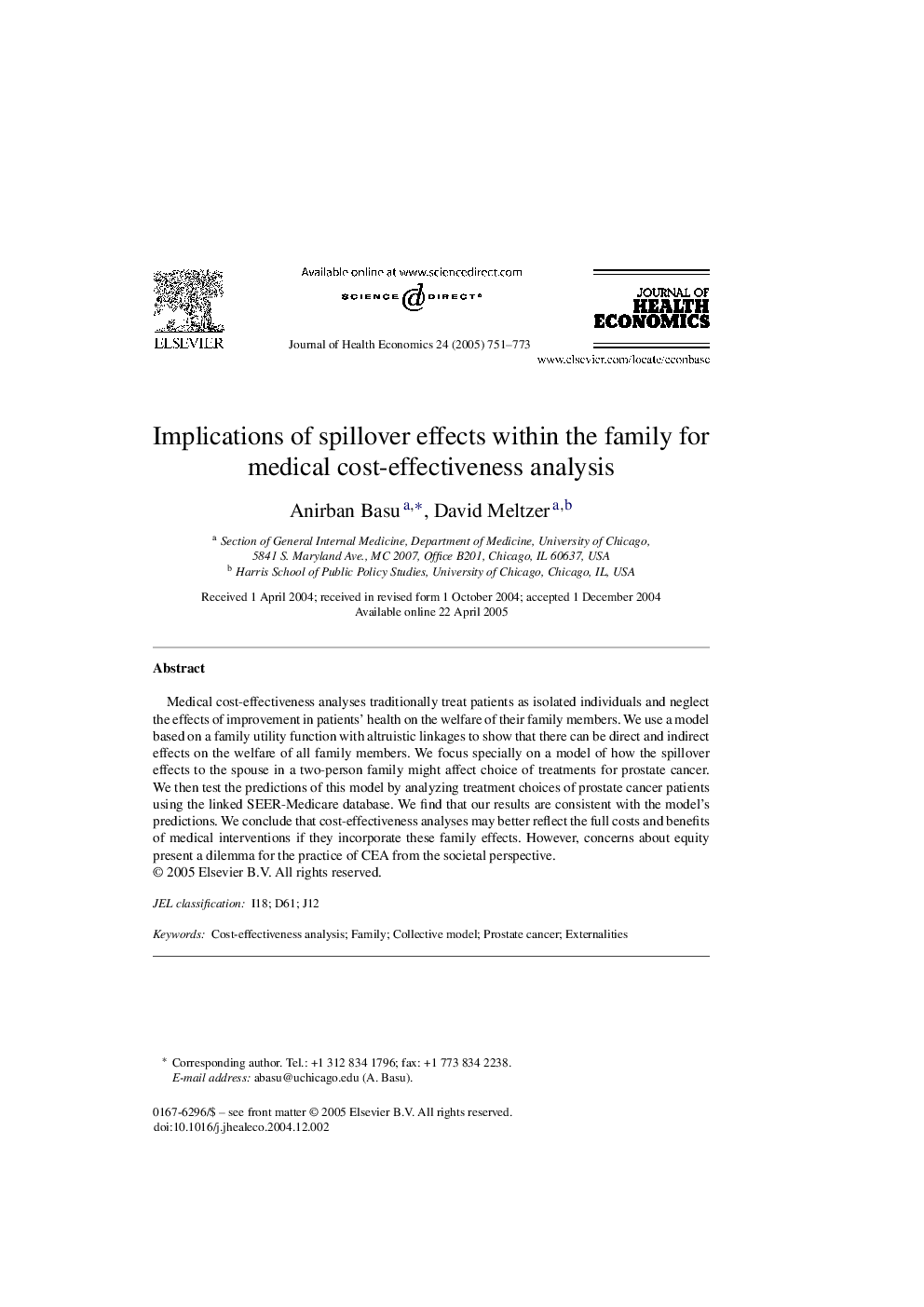| Article ID | Journal | Published Year | Pages | File Type |
|---|---|---|---|---|
| 10476650 | Journal of Health Economics | 2005 | 23 Pages |
Abstract
Medical cost-effectiveness analyses traditionally treat patients as isolated individuals and neglect the effects of improvement in patients' health on the welfare of their family members. We use a model based on a family utility function with altruistic linkages to show that there can be direct and indirect effects on the welfare of all family members. We focus specially on a model of how the spillover effects to the spouse in a two-person family might affect choice of treatments for prostate cancer. We then test the predictions of this model by analyzing treatment choices of prostate cancer patients using the linked SEER-Medicare database. We find that our results are consistent with the model's predictions. We conclude that cost-effectiveness analyses may better reflect the full costs and benefits of medical interventions if they incorporate these family effects. However, concerns about equity present a dilemma for the practice of CEA from the societal perspective.
Related Topics
Health Sciences
Medicine and Dentistry
Public Health and Health Policy
Authors
Anirban Basu, David Meltzer,
